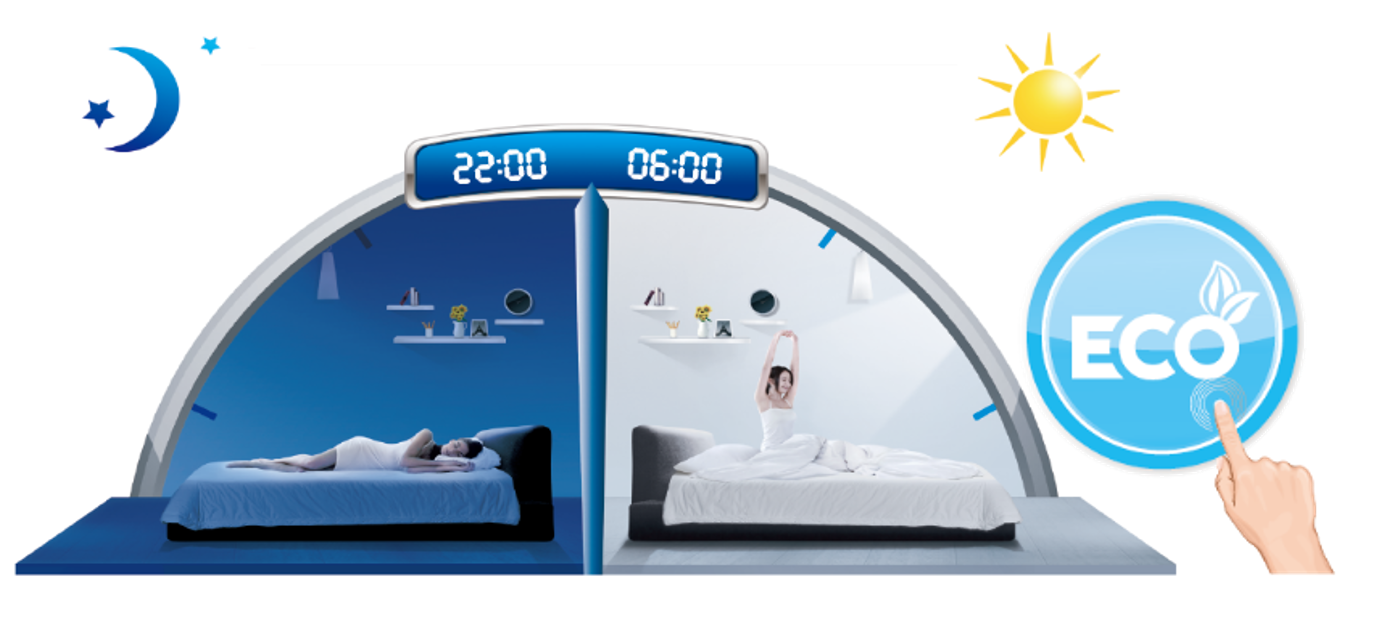LEXICON

Heat Pump : A heat pump is a heating and cooling device that uses a heat transfer process to move thermal energy from one location to another. In heating mode, it extracts heat from the outside air, ground or water to transfer it indoors, while in cooling mode, it removes heat from the interior to reject it outside. outside. Heat pumps are often used in heating, ventilation and air conditioning systems to provide efficient thermal comfort.
Air Conditioner : An air conditioner is an electronic device designed to regulate temperature, humidity and air quality in an enclosed space. It works by extracting heat from inside a room and releasing it outside, helping to maintain a comfortable temperature. Air conditioners are commonly used in residential buildings to create pleasant indoor conditions, whether by cooling during hot periods or heating during cold periods. They can be stand-alone (individual units) or integrated into a more complex heating, ventilation and air conditioning (HVAC) system.
Condenser : A condenser is a device or part of a system that converts a gas or vapor into a liquid. This usually involves the release of heat. In the context of air conditioning and refrigeration systems, the condenser is the element where the refrigerant gas releases heat and changes from the gaseous state to the liquid state. This is an essential step in the cooling process of these systems.
Coil : A coil is a coiled or sinuous shaped element, often used in heat or fluid transfer applications. This can take the form of a tube or coil which is arranged to promote heat exchange or the circulation of a liquid. Coils are commonly used in various contexts, such as heating radiators, air conditioning systems, heat exchangers and other applications where heat transfer or the passage of fluids is required.
Evaporator : An evaporator is a device that facilitates the process of evaporation, the transition from a liquid to a gaseous state. It is widely used in various contexts, including refrigeration, air conditioning, and food or chemical production systems.
In an air conditioning or refrigeration system, the evaporator absorbs heat from the environment or from the fluid flowing through its coils, causing the refrigerant liquid inside to evaporate. This evaporation absorbs heat from the surroundings, thereby cooling the space or fluid.
In other words, the evaporator is the component that allows the liquid to change from liquid to gas by absorbing heat from its surroundings.
Central system : A central heat pump system is a heating and cooling system that uses technology to transfer heat between the interior and exterior of a building. It works by extracting heat from the outside air to heat the interior during cold months and exhausting heat from the interior to the exterior during hot months to cool the space.
This system uses a refrigerant that circulates between an indoor unit and an outdoor unit, facilitating heat transfer. During the heating season, the heat pump extracts heat from the outside air, even in cold weather, and redistributes it indoors. In summer, the process is reversed, discharging heat from inside the house to the outside.
This type of system offers an efficient and energy-saving solution, combining heating and air conditioning in a single central system. It is commonly used in homes, commercial and industrial buildings.
Condensate pump : A condensate pump, also called a condensate lift pump, is a device used in heating, ventilation, and air conditioning (HVAC) systems to remove condensation water generated by the air conditioning or heating unit .
When these systems operate, hot or cold air circulates through the heat exchanger, causing moisture in the air to condense. This condensation water must be drained effectively to avoid problems such as leaks or damage to the device.
The condensate pump is installed to collect this condensation water and pump it out of the unit to a location where it can be safely disposed of, such as a sewer drain or dedicated pipe. This helps keep the HVAC system running smoothly and prevents problems related to water buildup.
Auxiliary Heat : Auxiliary heat pump heat refers to a supplemental heating system built into a heat pump, which is activated when outdoor conditions are extremely cold. Heat pumps, especially air-to-air models, work by extracting heat from the outside air, even in cold weather, to heat the interior of a building.
However, when the outside temperature becomes very low, the heat pump's ability to extract heat may be limited. This is where auxiliary heating comes into play. It can take the form of an electrical resistance integrated into the heat pump, capable of producing heat even in very cold conditions.
In summary, auxiliary heating in a heat pump is an additional component designed to ensure efficient heating, even when outdoor temperatures are extremely low.
Compressor : A compressor is a mechanical device that increases the pressure of a fluid, such as air or gas, by reducing its volume. It works by drawing in fluid at low pressure, compressing it, and then delivering it at higher pressure. Compressors are widely used in various fields, including industrial, automotive, thermal engineering and air conditioning, for applications such as compressed air production, refrigeration, or gas propulsion.


